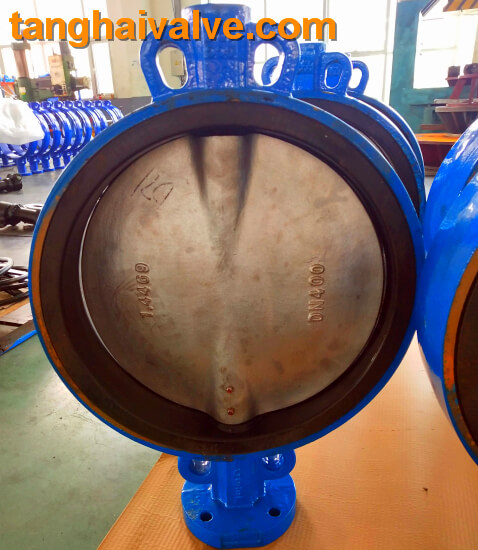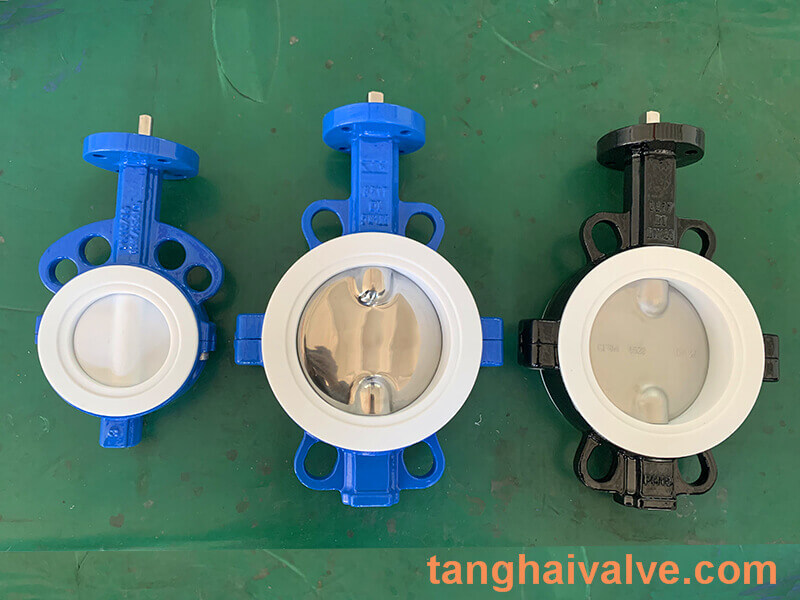Is the EPDM butterfly valve suitable for water medium?
EPDM rubber butterfly valve fully meets the water working conditions and is a kind of soft sealing butterfly valve. It has excellent weather resistance, ozone resistance, heat resistance, acid and alkali resistance, water vapor resistance, color stability, electrical properties, oil-filling properties and fluidity at room temperature. It can be used in ozone-resistant, weather-resistant, and ultraviolet-resistant applications, but based on its own structural characteristics, EPDM butterfly valves have poor flame retardancy, oil resistance and adhesion. Now let’s take a look at the specific performance of EPDM butterfly valve:

wafer type butterfly valve, EPDM seat (10)
1. Low density and high filling:
The seat material of EPDM butterfly valve is a kind of rubber with lower density. A large amount of oil and filler can be added, so it can reduce the cost of rubber products, make up for the high price of EPDM rubber, and the physical and mechanical properties of the valve seat sealing surface are not greatly reduced after high filling.
2. Aging resistance:
EPDM butterfly valves have a common feature of rubber that is not resistant to high temperatures. It can be used for a long time at 120 ℃, and can be used briefly or intermittently at 150 to 200 ℃. However, manufacturers now also try to add suitable antioxidants to increase the temperature of the valve, and the EPDM butterfly valve cross-linked with peroxide can be used under more severe conditions.
3. Corrosion resistance:
EPDM butterfly valves have good resistance to various polar chemicals, such as alcohols, acids, alkalis, oxidants, refrigerants, detergents, animal and vegetable oils, ketones and greases. But it has poor stability in gasoline, benzene, etc. and mineral oil. Therefore, it is not suitable for oil, and its performance will decrease under the long-term action of concentrated acid.
4. Water vapor resistance:
EPDM butterfly valve has excellent performance in water vapor resistance. It is much higher than the performance of fluorine rubber, silicon rubber, fluorine silicon rubber, butyl rubber, nitrile rubber, and natural rubber under the same conditions.
5. Superheated water resistance:
The superheated water EPDM butterfly valve is also no problem, the mechanical properties change very little, and the volume expansion rate is low, but it is closely related to the vulcanization system used.
6. Electrical performance:
Compared with styrene butadiene rubber, polyethylene and cross-linked polyethylene, the electrical performance of EPDM butterfly valve is very close or even better, and it has good electrical insulation and corona resistance.
7. Flexibility:
In terms of elasticity, EPDM butterfly valves are second only to natural rubber and butadiene rubber, and can still be maintained at low temperatures.
8. Adhesion:
Due to the lack of active groups in the molecular structure of EPDM, the cohesive energy is low, and the rubber is easy to bloom, and its self-adhesiveness and mutual adhesion are very poor.
TH Valve is a professional manufacturer of butterfly valve, gate valve, check valve, globe valve, knife gate valve, ball valve with API, JIS, DIN standard, used in Oil, Gas, Marine industry, Water supply and drainage, fire fighting, shipbuilding, water treatment and other systems, with Nominal Diameter of DN50 to DN1200, NBR/EPDM/VITON, Certificates & Approvals: DNV-GL, Lloyds, DNV, BV, API, ABS, CCS. Standards: EN 593, API609, API6D
Video of center-lined butterfly valve: https://youtu.be/NuSZH_AJcwY
Related news/knowledge:
Commonly Used Seat Materials for Butterfly Valve
Factors Affecting the Operation and Use of resilient seated butterfly valve
Valve seat sealing (TH-VSE)
Field Application of Electric resilient seated Wafer Butterfly valve




 © Copyright 2020 Tianjin Tanghaidongyang Valve Co., Ltd. All Rights Reserved.
© Copyright 2020 Tianjin Tanghaidongyang Valve Co., Ltd. All Rights Reserved.